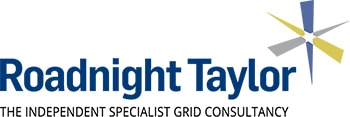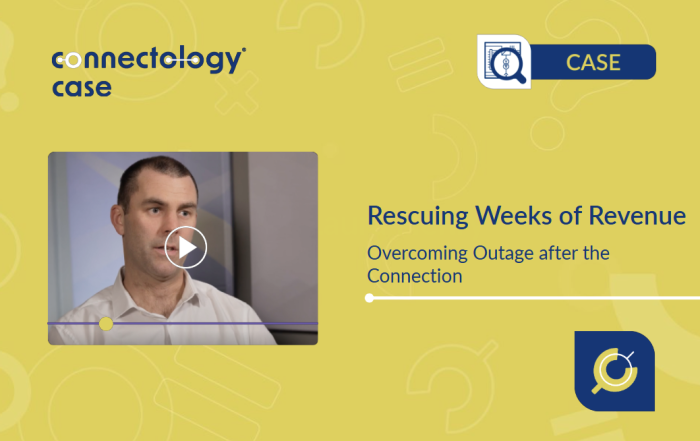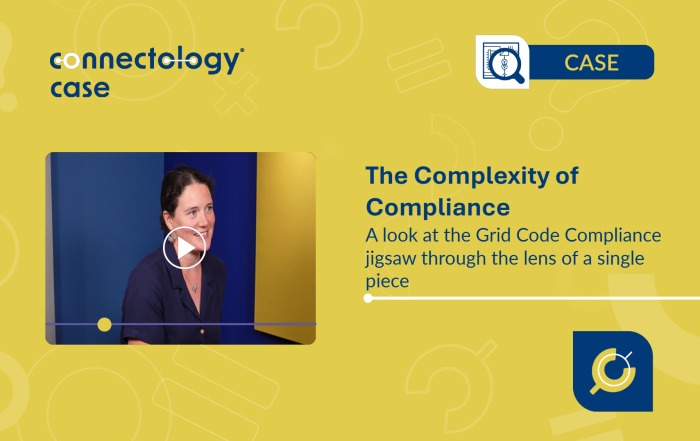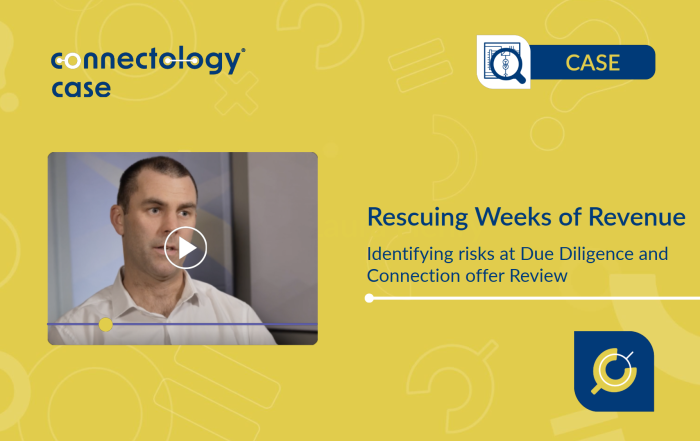00:05 Who’s listening?
This case study is really important for customers who’ve got connected sites, but who’ve maybe got concerns over the outage risk on those sites.
Maybe customers have had significant outages in relation to their connections already, maybe they’re just concerned about outages that might happen on their connections.
00:25 The Challenge
This is a 132kV connected wind farm. In their connection agreement, they had listed lots of outage constraints for about four or five different circuits that they could be switched off for.
But for the first five years or so of the project, there were no problems. For then a period of about four or five years, there was significant outages on the 132kV networks that were listed in the connection agreement. So the customer kept getting switched off for weeks and weeks at a time during that 4 to 5 year period, which ended up with them having a loss of revenue of in the region of £2 million. So this was very significant for the client.
We as Roadnight Taylor were brought in to help this client. At that point the client was then told that the next year they were going to be switched off for about six or seven months. Now this was going to lead to a loss of revenue of in the region of £4-£5 million, and it put the whole viability of the connection at risk.
01:25 Short Term Solution
So in terms of the short term solution, that was trying to work with the DNO to see if we could do anything to shorten the length of outages, or make those outages more palatable for the client.
So we managed to agree with the network operator to get them to provide a temporary connection solution so that the circuit wasn’t actually completely disconnected from the network.
So that temporary solution allowed the client to be connected for an additional three month period when they were actually going to have been disconnected as per the original plans. So that was a short term solution.
02:04 Medium Term Solution
In terms of then the medium term solution,we were then exploring with the networkcompany about an active networkmanagement solution.
So allowing the customer to stay connected to the network to generate power from their wind farm, but with the output of their wind farm to be ramped up and down as capacity was sort of ramped up and down on the network.
02:26 Long Term Solution
The longer term solution was in discussion with the DNO. We understood that there was going to be some additional network reinforcement done during the next sort of three years or so.
That additional network reinforcement the network operator was doing was going to allow this connection to have a different alternative feed. In agreement with the DNO, we’ve made an application to the DNO to utilize that alternative feed.
It wasn’t going to help with the immediate outage concern of that 6-to-7-month outage period that was coming up, but it was going to secure the site on a longer-term basis, giving them more security in terms of less risk from outages in the future.
03:12 Collaboration
Whilst I was the project lead, I was working together very collaboratively with lots of different people. Within Roadnight Taylor, I was drawing on the experience of the other engineers within the team, which is what we do all the time.
I was also working very closely with the client, trying to understand all the time what their requirements were, what were their red lines, how far would they go with this that or the other. So working very closely with the clients, really important.
Then we were working very closely with the network operators, plural, because we were working with one network operator who the wind farm was connected to, but then also having to work with another DNO in order to get this active network management system working. So that was collaborating across two DNOs
We were also working with a third party provider of systems getting their advice and input into this as well.
So the whole thing was collaboration, which is really important because no one party can make these things happen and make these things work.
04:15 Key Lessons
This makes a really good case study for sites that are connected that have outage problems. So I think the first thing that it highlights is that if sites haven’t currently experienced outage risks, it doesn’t mean that they’re not somewhere in the connection agreement. So you might find that your site’s been connected a few years, five years, even ten years, and that suddenly you might find yourself getting switched off for significant outages on the network. So it’s really important to do a review of your connection agreement to work out what you are actually at risk of so that you can get ahead of the game rather than being surprised. So I think that’s the first lesson – do that review of your connection agreements.
The second is if you are running into problems with outages on the network, there are things you can do to resolve it. So the advice is take the time, look at the outages you’ve got. With the right advice you can improve the situation that you’re in, in terms of risk of outages for your connection.
If you’re a DNO and you’re listening, give your customers as much notice as possible, the longer outage period that you’re going to switch the customer off for, the longer the notice period you should be giving that customer.
And this has got learning points for the wider industry I think, to say yes, DNOs can work together. They’re often seen to be sort of competing with each other, but actually in these sorts of circumstances they can work together for the good of customers and to enable renewable energy projects to connect to the grid.





